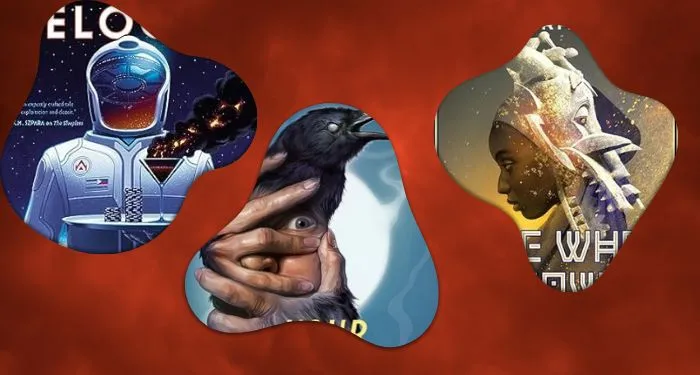Peter Godfrey-Smith does well to take a closer look at the reception of Jakob von Uexküll’s Umwelt theory in recent books by Jackie Higgins and Ed Yong [“Visible and Invisible Worlds,” NYR, June 6], but like much recent critical engagement with Uexküll, his article decontexualizes the theory’s significance from his larger theory of meaning, which did change over the course of his fifty-year career—and notably during the Nazi period. Uexküll was not a solipsist, at least insofar as he was a sensitive interpreter of Kant’s transcendental idealism—which had set out to refute the solipsism of such confounding idealists as Hume—but it’s easy to make him sound like one if you quote him sparingly and don’t make too much of that meanly arcane Kantianism. These contemporary authors’ receptions and criticisms also rely too heavily on a single work, A Foray into the Worlds of Animals and Humans, written for a popular audience and published in 1934—and dedicated to Uexküll’s colleague and friend, Otto Kestner, who helped to establish the Institute for Umwelt Research at the University of Hamburg, and who had been a victim of the Nazis’ ban, in the previous year, of Jewish professors in German universities (Uexküll’s dedication was, unfortunately, not reprinted in posthumous editions). Critics of Uexküll’s apparent solipsism may be surprised to learn that, while he firmly believed that empirical data—mere materiality—could not of itself reveal the mystery of consciousness, he did not think that “sealing off” consciousness meant that plants and animals didn’t meaningfully interact in complicated and manifold ways. Far from it. Only Uexküll’s was not a study of reality, but of representation and truth as mediated by the senses—a point not always taken by the industry of popular books about the science of consciousness. Even champions of Uexküll might be surprised to know that he writes, in “Struggle for the Soul of the Animal” (1902), that “what I’m concerned with…is that science should remain silent in cases where the possibility of knowledge is foreclosed.” Interestingly, Uexküll also writes, in a vein similar to that of Rilke, his friend and correspondent, that the “various vital expressions” of animals can only “coalesce into a miraculous unity in the soul of the poet.” If researchers grow tired of lobotomizing cats, in their Faustian pursuit to solve the ever more complicated riddle of consciousness, and ethicists are rightfully reluctant to throw their support behind the “miniaturization of internal recording devices” (Elon Musk doesn’t need our encouragement), they might start an inquiry here. A reevaluation of Uexküll’s theory of meaning, then—for which the Umwelt is one component—will do well to ignore the praises of such interpreters as Heidegger, and just read Uexküll instead.
Alex Beatty
Princeton, New Jersey
Peter Godfrey-Smith speaks with apparent approval of the books under his review for trying “to get inside their” (i.e., animals’) “point of view, to work out how things seem to them.” These phrases recall Thomas Nagel’s 1974 question, “What Is It Like to Be a Bat?,” which inspired the mantra of the consciousness studies movement, that “there’s something that it’s like to be conscious.” I believe there are good reasons for thinking this perspective mistaken.
In the commonsense understanding of the word “conscious,” if an animal responds to sensory stimuli then it’s conscious, but not if it doesn’t. Likeness, however, is not an object of sense. Anything can “seem” in some respects like, but in others unlike, anything else because a seeming likeness is a relation that only similes and metaphors can conjure up between objects either of sense or of abstract thought, e.g., between items as disparate as my love and a red, red rose. The peculiar senses of bats and other species enable them to react to phenomena that don’t impinge on ours, but likeness isn’t one of them because they have no language in which to formulate the concept of likeness.
We can imagine what it might be like for us (or how it might seem to us) to have the senses bats have, but, for bats, there’s nothing that it’s “like” to be a bat. Nagel’s footnote insists that his “what it’s like” formula refers only to “how it is for the subject himself,” with no implication of resemblance, but that doesn’t remove the difficulty because “How was it for you?” is a question about the quality of an experience, and a quality just is an attribute in respect of which one item resembles another.
Merely being conscious, i.e., responsive to sensory stimuli, doesn’t imply, as Godfrey-Smith suggests, the existence of a point of view from which one thing might seem to be like another. It’s only my functioning as a speaker, my asking and answering questions, that identifies my body as the location of one who can both be held responsible and take responsibility for his point of view—an impossibility for any nonlinguistic animal—and what that point of view is can’t be recognized as such, even by me, until I’ve made it explicit as I’m doing here.
Christopher Eddy
Swindon, Wiltshire, England
Alex Beatty says that Jakob von Uexküll was no solipsist, and our understanding of him is not helped by relying too much on his 1934 Foray, as opposed to other works. The quote in my review that expresses the strongest subjectivism, though, the quote that seems to send him toward a kind of solipsism, is from the introduction to his earlier Theoretical Biology. This is where Uexküll says, “All reality is subjective appearance. This must constitute the great, fundamental admission even of biology” (translated by D.L. Mackinnon). He continues: “It is utterly vain to go seeking through the world for causes that are independent of the subject; we always come up against objects, which owe their construction to the subject.”
Uexküll continually expresses his debt to Kant, and Kant’s project is often seen as a sophisticated attempt to avoid excesses of subjectivism while attending to the role of the knowing subject. But Uexküll’s assertion of Kantianism in biology seems to land him in a more subjectivist place than his mentor: “The subject plays the decisive role in constructing the world of appearance, and on the far side of that world there is no world at all.”
Christopher Eddy opposes the common way of expressing the problem of consciousness, due to Thomas Nagel, in terms of there being “something it’s like to be” a human or other animal, or perhaps some other system. I didn’t use Nagel’s formulation in my review, but Eddy is right that I came close to it in my emphasis on getting inside other animals’ points of view and working out how things seem to them. And I think that Nagel’s wording is a good way of expressing, in plain language, what the problem of consciousness is about. (It is better than introducing the problem with technical notions of “qualia,” or “phenomenal qualities,” in particular.)
The Nagel formulation is imperfectly worded in one way, in the apparent invocation of a comparison. There’s something it’s like to be a bat or an octopus, which suggests that there’s something it’s similar to. Nagel’s 1974 paper tried to point away from this interpretation in a footnote, which Eddy finds unconvincing. But the basic idea, and the way I express it when I do use the Nagel quote, is that for a conscious organism, there’s a way things feel to that organism. Whether that way is like something else is not the issue.
Eddy says: “In the commonsense understanding of the word ‘conscious,’ if an animal responds to sensory stimuli then it’s conscious, but not if it doesn’t.” If we’re dealing with an organism that we know on other grounds is conscious some of the time, then this criterion can help us work out whether it is conscious now. But it provides only a more problematic test of whether an organism is the kind of thing that is conscious some of the time. Bacteria can respond to sensory stimuli, as well as animals (especially chemicals they detect around them). One might argue that with their hint of genuine sensing comes a tiny glimmer of consciousness—a radical view, but not one that should be ruled out. If it’s true, it would have to be defended by showing that the way a bacterium responds to its environment brings with it something like feeling, while the response of a simple artifact like a thermostat is different. This might be where we end up, but not just by linking consciousness with an informal concept of sensing. Another option is to conclude that sensing can exist—in plants, fungi, bacteria—in a form that does not bring with it consciousness.



















 English (US) ·
English (US) ·